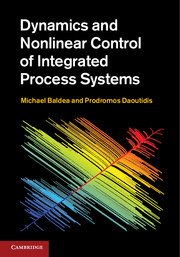Book contents
- Frontmatter
- Contents
- Preface
- Part I Preliminaries
- Part II Process systems with material integration
- 3 Process systems with significant material recycling
- 4 Process systems with purge streams
- 5 Dynamics and control of generalized integrated process systems
- Part III Process systems with energy integration
- Part IV Appendices
- References
- Index
3 - Process systems with significant material recycling
from Part II - Process systems with material integration
Published online by Cambridge University Press: 05 September 2012
- Frontmatter
- Contents
- Preface
- Part I Preliminaries
- Part II Process systems with material integration
- 3 Process systems with significant material recycling
- 4 Process systems with purge streams
- 5 Dynamics and control of generalized integrated process systems
- Part III Process systems with energy integration
- Part IV Appendices
- References
- Index
Summary
Introduction
Modern chemical plant designs favor “lean” configurations featuring material recycling, fewer units, and diminished material inventory. Together with the elimination of provision for intermediary storage (buffer tanks), these traits intuitively result in significant dynamic interactions between the process units, leading to an intricate dynamic behavior at the process level. Consequently, the design and implementation of advanced, model-based control systems aimed at improving plant performance is a difficult matter, with the complexity, large dimension, and ill conditioning of the process models being major hindrances.
In this chapter, we begin to explore the dynamic impact of process integration. Following closely the arguments in (Kumar and Daoutidis 2002), we consider a specific category of process systems, namely processes with significant (compared with the feed flow rate) material recovery and recycling. We will establish a connection between this steady-state design feature and the transient behavior of the process, followed by postulating a hierarchical control framework that exploits our findings in the realm of process dynamics in the design of well-conditioned, low-dimensional controllers.
Modeling of process systems with large recycle streams
We consider a generic class of reaction–separation process systems, such as the one in Figure 3.1, consisting of N units (modeled as lumped parameter systems) in series, with one material recycle stream.
- Type
- Chapter
- Information
- Publisher: Cambridge University PressPrint publication year: 2012



